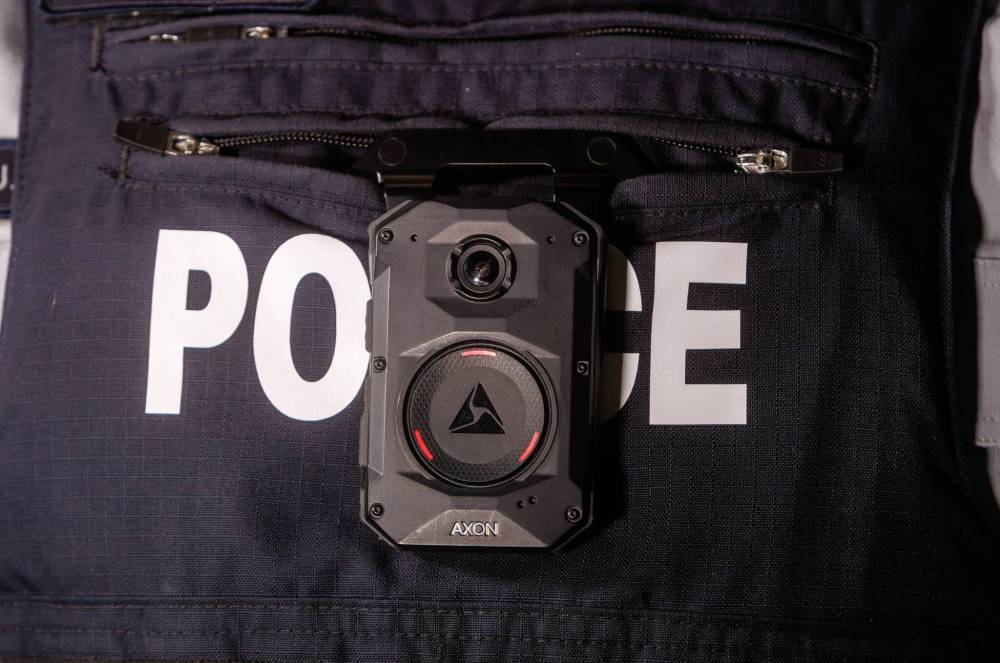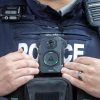More Manitoba Mounties getting body cameras as rollout continues
490 officers in 44 detachments to have devices by end of April
Advertisement
Read this article for free:
or
Already have an account? Log in here »
To continue reading, please subscribe:
Monthly Digital Subscription
$0 for the first 4 weeks*
- Enjoy unlimited reading on winnipegfreepress.com
- Read the E-Edition, our digital replica newspaper
- Access News Break, our award-winning app
- Play interactive puzzles
*No charge for 4 weeks then price increases to the regular rate of $19.00 plus GST every four weeks. Offer available to new and qualified returning subscribers only. Cancel any time.
Monthly Digital Subscription
$4.75/week*
- Enjoy unlimited reading on winnipegfreepress.com
- Read the E-Edition, our digital replica newspaper
- Access News Break, our award-winning app
- Play interactive puzzles
*Billed as $19 plus GST every four weeks. Cancel any time.
To continue reading, please subscribe:
Add Free Press access to your Brandon Sun subscription for only an additional
$1 for the first 4 weeks*
*Your next subscription payment will increase by $1.00 and you will be charged $16.99 plus GST for four weeks. After four weeks, your payment will increase to $23.99 plus GST every four weeks.
Read unlimited articles for free today:
or
Already have an account? Log in here »
Hey there, time traveller!
This article was published 03/01/2025 (329 days ago), so information in it may no longer be current.
At least one-third of RCMP officers in Manitoba are expected to be wearing body-worn cameras by the end of March amid an ongoing Canada-wide rollout by the national police service.
Four more Manitoba detachments are set to begin using cameras in January, followed by two dozen others in February and March, Manitoba RCMP spokesman Sgt. Paul Manaigre said.
“One thing that appears to be popular with the officers is the ability to take photos and audio statements with the (cameras),” Manaigre told the Free Press. “On the investigational side, it’s definitely helping in that regard.”

MIKE DEAL / FREE PRESS FILES
Four more Manitoba detachments are set to begin using cameras in January, followed by two dozen others in February and March, Manitoba RCMP spokesman Sgt. Paul Manaigre said.
The phased rollout to 674 front-line officers in Manitoba began with Steinbach’s detachment on Nov. 22. It is expected to take 18 months.
Officers in Portage la Prairie, Amaranth and Treherne began using the cameras, which are worn on the front of uniforms, on Dec. 4.
The Selkirk, Red River North (East St. Paul) and Grand Marais detachments will get cameras Tuesday, followed by St-Pierre-Jolys on Jan. 22.
The rollout will expand to detachments in Brandon, Dauphin, Hamiota, Minnedosa, Neepawa, Shoal Lake, Ste. Rose du Lac and Wasagaming in February, Manaigre said.
Bodycams will be used by officers based in Beausejour, Boissevain, Carman, Chemawawin Cree Nation, Fisher Branch, Gimli, Grand Rapids, Gypsumville, Killarney, Manitou, Oakbank, Melita, Morden, Reston, Sprague and Virden in March.
Chemawawin and Grand Rapids are scheduled to be the first northern Manitoba detachments to be equipped with cameras.
“By the end of March, at least one-third of officers in Manitoba will have body-worn cameras,” Manaigre said.
Manitoba RCMP expect more than 490 officers in 44 detachments to be equipped with cameras by the end of April.
Officers complete about eight hours of training before using cameras in the field. An online component is followed by training when they receive the device, Manaigre said.
The federal government pledged nearly $240 million over six years and $50 million in annual operating funding for the program.
The RCMP promoted the technology as a way to help increase trust, resolve public complaints more quickly and improve evidence-gathering.
The police service’s internal audit, evaluation and review branch, touted as an independent office, has one audit of the bodycam program in progress and a second planned, its website states.
Christopher Schneider, a sociology professor at Brandon University, said the “verdict is out” on whether the cameras boost transparency or accountability because they are typically not measured in scientific research.
Studies in other jurisdictions showed mixed results on whether cameras help to reduce the number of use-of-force incidents or public complaints, he said.
Footage is rarely made public in Canada, partly because of privacy laws. Schneider cited examples in Canada and the U.S. in which officers deliberately turned off their cameras.
“I desperately want them to work. I really do, but the evidence doesn’t support it,” Schneider said.
Evaluations, or audits, of bodycam programs should be done once a year by a third party instead of police services, he said.
The findings, including disciplinary action for policy breaches, should be made public, Schneider said.
Municipal police officers in Brandon will begin using cameras by this fall, the city’s police chief, Tyler Bates, recently told the Brandon Sun.
The Winnipeg Police Service does not use bodycams. City council rejected a funding proposal in 2021, when the cost of more than 1,300 cameras was estimated at $7 million. The annual operating cost, including digital video storage and staff members, was about $4 million.
chris.kitching@freepress.mb.ca

Chris Kitching is a general assignment reporter at the Free Press. He began his newspaper career in 2001, with stops in Winnipeg, Toronto and London, England, along the way. After returning to Winnipeg, he joined the Free Press in 2021, and now covers a little bit of everything for the newspaper. Read more about Chris.
Every piece of reporting Chris produces is reviewed by an editing team before it is posted online or published in print — part of the Free Press‘s tradition, since 1872, of producing reliable independent journalism. Read more about Free Press’s history and mandate, and learn how our newsroom operates.
Our newsroom depends on a growing audience of readers to power our journalism. If you are not a paid reader, please consider becoming a subscriber.
Our newsroom depends on its audience of readers to power our journalism. Thank you for your support.



